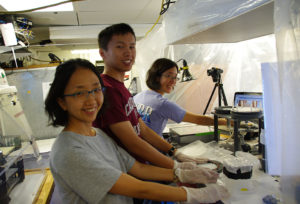 Setting up and organizing the various lab spaces take up a large proportion of the time spent loading a ship. Phoebe Lam’s “Bubble” and Jim Bishop’s clean air-water filtration station are examples of spaces that the researchers need to ensure that the samples they collect are not contaminated.
Setting up and organizing the various lab spaces take up a large proportion of the time spent loading a ship. Phoebe Lam’s “Bubble” and Jim Bishop’s clean air-water filtration station are examples of spaces that the researchers need to ensure that the samples they collect are not contaminated.
When the researchers are not out on deck deploying or recovering equipment, they are often found in the main lab area working with the samples or the robotic floats. Read More »
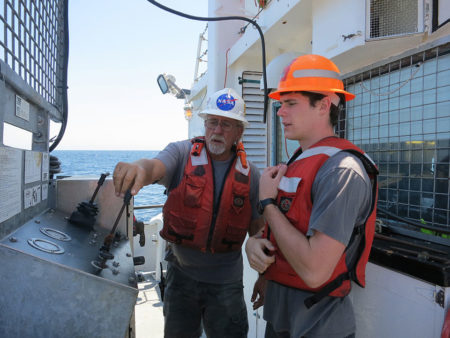 All members of Jim Bishop’s team on board the Oceanus have been trained in key deck operations, such as working the tag lines during CTD deployment. UC Berkeley junior William Kumler, for instance, has been introduced to the winch at the stern of the ship. He stood at the controls during sediment trap deployments and recovery, vigilantly following the signals for letting out or taking in cable.
All members of Jim Bishop’s team on board the Oceanus have been trained in key deck operations, such as working the tag lines during CTD deployment. UC Berkeley junior William Kumler, for instance, has been introduced to the winch at the stern of the ship. He stood at the controls during sediment trap deployments and recovery, vigilantly following the signals for letting out or taking in cable.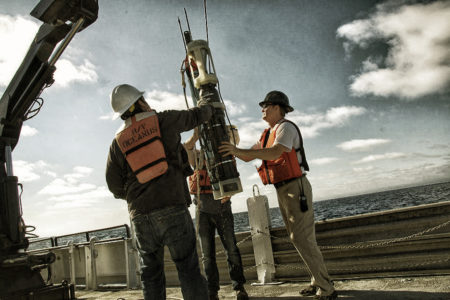 All robots are present and accounted for. The two Carbon Flux Explorers launched yesterday and the day before were recovered today, including CFE-Cal 2 with its experimental sample collection system.
All robots are present and accounted for. The two Carbon Flux Explorers launched yesterday and the day before were recovered today, including CFE-Cal 2 with its experimental sample collection system.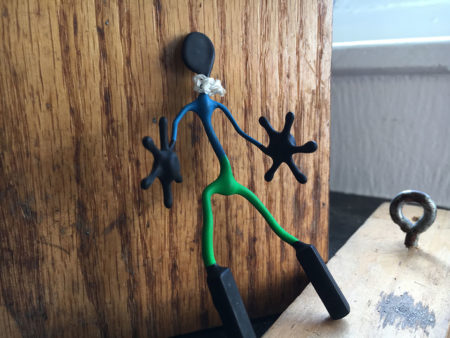 Meet the Gremlin. Several years ago, Jim Bishop found him in a toolkit that came with a box of new particulate inorganic carbon (PIC) sensors used on the CTD Rosette. The figurine was a joke, apparently added to the box of spare parts by the sensor manufacturers.
Meet the Gremlin. Several years ago, Jim Bishop found him in a toolkit that came with a box of new particulate inorganic carbon (PIC) sensors used on the CTD Rosette. The figurine was a joke, apparently added to the box of spare parts by the sensor manufacturers.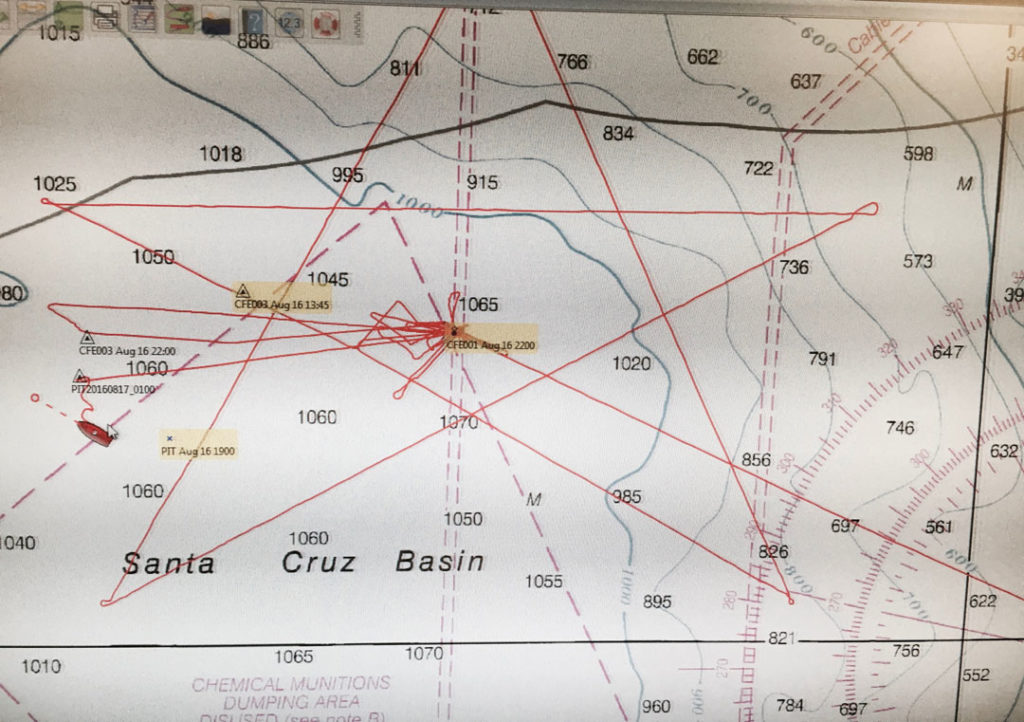 If you’ve been tracking the Oceanus, you may have noticed a familiar pattern in some of its movements. The first night at the Santa Cruz Basin, the Oceanus conducted spatial mapping of the region, surveying temperature, salinity and other variables relevant to the particle concentration in the water. Connect the dots and the star will appear.
If you’ve been tracking the Oceanus, you may have noticed a familiar pattern in some of its movements. The first night at the Santa Cruz Basin, the Oceanus conducted spatial mapping of the region, surveying temperature, salinity and other variables relevant to the particle concentration in the water. Connect the dots and the star will appear.